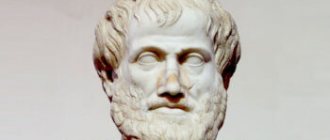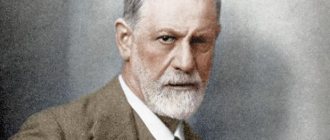The 20th century was rich in scientific discoveries in the field of psychology. Different directions and approaches to human research have tried in every possible way to answer the question of what humanity is. In the wake of the passion for positivism and the search for accurate research methods, the most popular psychological concept has long been considered behaviorism, which implied the idea that a person is always a creation of surrounding circumstances, and completely excluded the importance of consciousness and the internal characteristics of the individual.
It was in the spirit of behaviorism that the theory of operant conditioning was formulated by the American psychologist Burres Skinner, who argued: human behavior is determined and therefore predictable.
In this article we will take a closer look at Skinner's most prominent concept, which has been repeatedly criticized for manipulating human behavior, but at the same time its proponents have fruitfully used it to introduce new character traits.
Who is Skinner?
An outstanding American psychologist who lived in the 20th century. He made significant contributions to the development of behaviorism. He is best known for his theory of operant conditioning. In addition to his achievements in psychology, Burres Skinner was an excellent inventor. One of the scientist’s inventions is a box named after him - the Skinner box. This design is intended to explore the principles of operant conditioning.
Skinner pioneered the work of functional analysis. It was he who proposed it as a method for studying behavior.
It is known that in 1958 the famous psychologist was awarded the prize “For Outstanding Contribution to the Development of Science.” And this award was presented by the American Psychological Association. It was noted that few American psychologists were able to make such a significant contribution to the development of psychology.
In 1972, the same Association recognized Burres Frederick Skinner as the most outstanding psychologist of the 20th century. The second place at that time was taken by S. Freud.
The famous psychologist has hundreds of articles and several dozen scientific books to his credit.
Skinner's theory of behaviorism is a breakthrough in the science of psychology. And it will be discussed below.
Criticism of Skinner and his scientific contributions to the development of psychology
Despite the widespread approval of Skinner's scientific contributions by behaviorists, many famous psychologists - Erich Fromm, Noam Chomsky, Steven Pinker - did not agree with his position. They criticized Skinner for neglecting human feelings, cognitive abilities and the role of human drives. Therefore, Skinner’s “psychology” for Fromm, for example, was the science of manipulating human behavior.
However, despite the sharp criticism, Skinner's scientific results also bore a lot of fruit. It is not for nothing that in 1972 the American Psychological Association included Skinner among the most outstanding psychologists of the twentieth century. His ideas and observations have been repeatedly confirmed in various fields of application, where the most successful areas have been teaching communication skills, training confidence skills, self-control, and treating anxiety, migraines, hypertension and muscle tension.
By the way, about forming useful habits. If you want to understand how you can effectively cope with stress, anxiety and fears, pay attention to our online program “Mental Self-Regulation”. With its help, in 6 weeks you can learn effective ways to maintain mental clarity and cope with difficult situations at work, at university and in personal relationships.
As for Skinner's operant conditioning, there are many ways to approach it, and it's a personal choice. But I still want to believe that a person is not just animal material, guided only by reactions, but a conscious being, capable of always and everywhere relying on reason, making thoughtful decisions and acting in the best possible way.
We wish you success and look forward to your lessons!
We also recommend reading:
- Storytelling
- Wundt's method of studying psychology
- Criticism of positivism: briefly about the main anti-positivist concepts
- Associative learning
- Behaviorism: basic principles, representatives and directions
- Psycholinguistics as a tool for in-depth study of speech and language
- The emergence of positivism
- Applied behavior analysis: from stimuli to responses
- A Brief History of Psychology: From Antiquity to the Present Day
- Situationism in psychology and human behavior
- The Rosenthal effect or how to wisely lead a team
Key words:1Psychoregulation
Operant behavior
Skinner's operant behaviorism, or operant behavior, is any action aimed at achieving a specific goal. It is influenced by antecedents and consequences.
Thus, the theory of operant conditioning is as follows: a learning process based on the actions of antecedents and consequences.
Consequences shape operant behavior. And therefore, its frequency increases or decreases in the future.
Antecedent factors influence the manifestation of behavior in the present tense.
Briefly about Skinner's behaviorism: the formation of operant behavior occurs as a result of “operating with consequences.” That is, certain conditions are created in the environment.
Behaviorism: a niche in pedagogy
So, over the course of a century, behaviorism has grown from a “harmless” natural science discipline that studies the behavior of animals into a powerful system for controlling mass and individual consciousness. His methods, however, are used not only in the interests of politicians and big businessmen. Analysis of behavior and its correction in themselves do not bring anything bad. Therefore, the principles of radical behaviorism have found their application, for example, in pedagogy. Here, school performance is stimulated, young people are encouraged to lead a healthy lifestyle, physical and intellectual development. With the help of behaviorism techniques, it is possible to treat a number of mental disorders and get rid of psychological problems.
However, the methods used by behaviorists to implement “good intentions” are criticized from time to time. Getting rid of some problems, their patients often acquire others, caused by this very “brainwashing”. It happens that a person becomes completely controlled and cannot make independent decisions. The patient's behavior becomes attached to incentives and to authorities, losing its own significance.
This can be illustrated by the example of religion, which is also a radical behaviorist construct. With the help of certain incentives (the promise of reward in heaven and “divine help” in earthly affairs, intimidation with “heavenly punishment,” etc.), the believer develops certain attitudes and behavior patterns that are closely related to religious teaching and the need for faith in God. If a person moves away from religion, he feels that he is losing the meaning of life, he begins to degrade more and more.
One can also recall how the behavior of the inhabitants of the former Soviet Union changed dramatically as soon as this Union ceased to exist. Millions of Soviet people existed in their country, essentially, in the form of controlled biorobots; they gave the impression of being educated, hardworking and intelligent people, responding to the incentives created by the state, and most often even non-material ones. When the source of incentives disappeared, the corresponding behavior disappeared. And when sources of other incentives appeared, people's behavior changed.
It is curious that for European socialist countries (Poland, Czechoslovakia, Hungary) this was much less typical: despite the fact that after the war communist regimes were established there, aimed at forming a “new man,” people’s behavior continued to be controlled by the usual “internal” mechanisms inherited from the capitalist era, traditional education and culture.
Creating conditions
These conditions, according to Skinner's behaviorism, are created through positive or negative reinforcements. Positive reinforcement strengthens the manifestation of a particular behavior in the future. Negative, on the contrary, extinguishes it.
For example, a child is constantly naughty in the store. Mom buys him a chocolate bar or a toy, the baby stops his whims. Chocolate is a positive reinforcement in this situation for the little capricious one. He has already developed a clear algorithm of behavior, and the child knows that if he starts a tantrum in the store, he will receive a kind of reinforcement for this.
Another example. A child throws a tantrum in a store. Mom ignores. The child screams even more, tries to fall on the floor and fight in hysterics. His mom spanks him hard and takes him out of the store without buying anything. The second time the baby again turns on this behavior system, and again receives a spanking. It is unlikely that he will want to be spanked for the third time. The child begins to behave calmly in the store, without trying to be capricious. And why? Because spanking is negative reinforcement. And the baby doesn’t like this method, so he will try to avoid it in the future.
Characteristics of neo-behaviorism
The neo-behaviourist movement was led by such American psychologists as E. Tolman and K. Hall.
E. Tolman outlined his main ideas in the book “Goal-directed behavior in animals and humans.” Like other behaviorists, he carried out his experimental work mainly on animals (white rats) and believed that the laws of behavior are the same for all living beings and can be traced most clearly and in detail at the elementary levels of behavior.
Tolman, like all his “classical behaviorists” predecessors, argued that the study of behavior should be carried out by a strictly objective method, without any assumptions about the inner world of consciousness that are inaccessible to the method. However, he objected to limiting the analysis of behavior to the stimulus-response formula and ignoring those factors that play an extremely important role between them. He calls these factors "intervening variables."
Before Tolman's research, it was believed that these factors were purely internal, open only to the individual subject who was able to observe his own consciousness. Tolman argued that internal processes could be "brought out" and their study given the same precision as the study of any physical object. To do this, behavior must be considered from the point of view of its holistic organization, and not as a chain of individual reactions. Holistic behavior was described by Tolman as a system that is connected to the environment by a network of cognitive relationships. The body navigates the situations to which it adapts by highlighting certain signs that allow it to distinguish “what leads to what.” He does not just encounter the environment, but approaches it with his own expectations, builds hypotheses and even shows some ingenuity in the process of searching for the best and most expedient way out of a problem situation.
Tolman believed that behavior cannot be reduced to the development of motor skills. This distinguished him from other behaviorists. His experimental data showed that the organism, in the process of gradually mastering the environment, builds a cognitive (“cognitive”) map of the path that must be followed to solve a particular problem. Tolman paid great attention to learning processes and identified a special type of learning, which was later called latent (hidden) learning. This latent learning plays a role when reinforcement is absent and is characterized by the ability to change behavior.
Tolman's theory led to a revision of the views of previous behaviorists on the factors regulating the adaptation of the organism to the environment. Among all these factors, the targeted regulation of the actions of living beings and their ability for active cognitive activity, even when it comes to the development of motor skills, stands out.
After E. Tolman's experiments, the inadequacy of previous views on behavior became obvious, and their thorough revision was required.
Behavior reinforcement
The principle of behavior reinforcement is a process that occurs in the environment after a behavior has already been generated and expressed.
Reinforcement occurs immediately after the behavior occurs.
Positive reinforcement is the presentation of a stimulus after the behavior has been demonstrated. It leads to its strengthening in the future.
Negative reinforcement is a stimulus that is given immediately after a behavior has occurred and reduces its subsequent likelihood of occurring.
According to Skinner's operant behaviorism, negative reinforcement is liberating. Having received it once, a person will subsequently strive to free himself from the strengthening of the unpleasant stimulus.
Types of amplification processes
B. Skinner's behaviorism speaks of two types of these processes: direct and indirect. The first are processes that involve external environmental stimuli that have a direct impact on humans. They, in turn, are divided into:
- Positive - attention, sleep, food.
- Negative - avoiding an unpleasant person.
Direct processes are automatic. They, like mediocre ones, are divided into positive and negative.
Growths
There are radical behaviorist schools of animal training, management, clinical practice, and education. Skinner's philosophical views left their mark on the principles adopted by a small handful of utopian communities such as Los Horcones and Twin Oaks, as well as in the ongoing challenges to aversive methods of controlling the behavior of humans and animals.
Radical behaviorism has spawned many descendants. Examples of this include the molar approaches associated with Richard Herrnstein and William Baum, Howard Rachlin's teleological behaviorism, William Timberlakes' behavior systems approach, and John Staddon's theoretical behaviorism. Contextual behavioral science, associated with the work of Stephen S. Hayes, is also an interpretation of radical behaviorism.
Skinner's theories about verbal behavior have found widespread use in therapy for children with autism that is based on applied behavior analysis (ABA).
Processes of weakening behavior
Skinner's behaviorism also includes weakening processes. What it is? It is a process of punishment or weakening that occurs after a behavior has occurred. And it leads to a weakening of unwanted behavior in the future.
These processes are divided into positive and negative.
Positive reduction is a process in which, following the occurrence of a behavior, an aversive stimulus is provided, resulting in a decrease and/or reduction in the behavior in the future.
Negative attenuation is the process of eliminating pleasurable stimuli after the presentation of an undesirable behavior, so that future occurrences of the behavior will be reduced or reduced.
Private events in the radical behaviorist account
Radical behaviorism differs from other forms of behaviorism in that it views everything we do as behavior, including personal events (such as thinking and feeling). Indeed, this is one of the reasons why Skinner's philosophy is considered radical. In contrast to John B. Watson, within behaviorism, private events are not rejected as "epiphenomena", but are seen as subject to the same principles of learning and modification that have been found to exist for overt behavior. Although private events are not publicly observable behavior, radical behaviorism accepts that each of us is an observer of our own private behavior.
Many textbooks, while emphasizing that Skinner considered behavior to be the proper subject of psychology, do not clarify Skinner's position and implicitly or even explicitly state that Skinner excluded the study of private events as unscientific.[16] Skinner explicitly noted that behaviorists must understand and account for particular events, although he also considered them to be beyond the scope of direct analysis. [17]
Antecedent factors
One of the stages of Skinner's behaviorism includes various incentives and motivational operations.
Motivational operations increase or decrease the effectiveness of a particular stimulus to strengthen or weaken behavior. They are divided into stimulating and suppressing.
Incentives increase motivational value. This means that the likelihood of behavior occurring increases.
Suppressors, in turn, reduce the motivational value of the stimulus, reducing the likelihood of a particular behavior occurring.
Incentives
They influence behavior due to past experiences. They can be divided into three options.
- A reinforcing consequence will occur after the behavior.
- There will be no aggravating effects.
- An unpleasant consequence will occur that will lead to weakened behavior in the future.
That is, the first option is a stimulating influence. A behavior will be more likely to occur because it has been reinforced in the past in the presence of a given stimulus.
The second option is suppressive influence. The behavior will not occur because in the past, when exposed to a given stimulus, an extinction process occurred.
The third option is prohibitive influence. The behavior will not occur because an aversive stimulus occurred in the past in the presence of the given stimulus, which weakened it.
Types of operant conditioning
Frederick Skinner divided the mechanism of reinforcement into three types:
- Reinforcement with rewards. Positive reinforcement of an action increases the likelihood that it will be repeated because the specific behavior led to positive consequences.
- Reinforcement through punishment. The body will try to avoid a certain action if it brings negative consequences.
- If an action has neither negative nor positive consequences, it disappears over time.
Positive reinforcement stimulates the body to engage in behavior reinforced by the reward. Punishment, on the contrary, reduces the likelihood of using the taught skill in the future.
Skinner's radical behaviorism
To understand what it is, you need to know its relationship to the theory of S. Freud. Skinner believed that he had made a colossal discovery that human behavior is largely determined by unconscious reasons. However, he fundamentally disagreed with Freud regarding his invention of the mental apparatus and accompanying processes to explain human behavior.
According to Skinner, behavioral processes have nothing to do with behavior. Mental links create only a problem for explaining behavior.
Skinner believed that a reflex is the concept of a relationship between a stimulus and a response to that stimulus. Thus, if the body receives reinforcement for its behavior, then it strengthens. The body remembers them, and accordingly, a certain type of behavior is learned and formed. If there is no reinforcement, then behavioral acts that are not supported by anything disappear from the body’s behavioral repertoire.
This can be called reflexive behavior or involuntary. Its main difference from the operant one is that the latter cannot be caused. It's voluntary. And reflex behavior is caused by one stimulus or another, no matter whether conditioned or unconditioned. This theory coincided with the opinion of the Russian scientist I. Pavlov.
What is behaviorism: briefly about the main thing
The English word behavior means “behavior”. This gave the name to the mentioned direction in psychology. Behaviorism aims to study human behavior, his interactions with other people and how he reacts to certain circumstances.
Every day people get out of bed and start doing something. And every minute they find themselves in certain situations in which they behave in a certain way. It happens that the behavior of some people in a given situation differs from the behavior of other people in the same circumstances. Why this happens is what behaviorism reveals. The acquired knowledge allows - no more nor less - to control the behavior of people, both individually and in large masses, allows one to influence society and force it to behave the way the owner of the knowledge wants.
It is interesting that the impetus for the development of behaviorism was given by Ivan Petrovich Pavlov, the great Russian biologist. He studied the reactions of animals to various stimuli, investigated conditioned and unconditioned reflexes, and created a whole science of higher nervous activity.
Certain ideas in this direction were discovered back in the nineteenth century: for example, the American researcher Edward Thorndike discovered the so-called “law of effect.” He conducted experiments on animals, placing them in complex boxes and observing how they found a way out of them. If the animal found a way out, it received a reward. Gradually, the animal learned to move in a certain way in order to find a way out the first time, without mistakes.
Subsequently, the laws of behavior, in addition to Pavlov, were also studied by John B. Watson, B.F. Skinner and other scientists. Skinner created radical behaviorism, which was based on the assertion that internal events (particularly thoughts and feelings) are controlled by the same mechanisms as externally observable behavior.
Behaviorism is a discipline that combines philosophy, methodology and psychology. It arose when it became clear that traditional areas of psychology could not always explain the phenomena being studied and make reliable predictions. In addition, traditional psychology at that time was not a sufficiently strict materialistic science and sometimes operated with concepts that were irrational or not scientifically proven (for example, the concept of the unconscious).
Behaviorism became an idea that was intended to explain human psychology from a strictly materialistic perspective. That is why the public, including the scientific community, initially received behaviorism rather coldly: it seemed too cynical to them, since it explained the complex and intricate relationships between people as a set of simple “animal” reactions. Behaviorism finally reduced man to the level of “merely an intellectually advanced animal” and in this sense seemed similar to social Darwinism, since it transferred the laws of the wild to human society.
Another disadvantage of behaviorism was its ignorance of the processes of consciousness, self-determination, and creativity. In general, the complex mental activity inherent in humans is not taken into account by this concept. For her, thoughts, dreams, fantasies exist only in the human mind and are in no way connected with reality; Moreover, studying these internal processes is a very difficult task.
Human control
Education in the concept of behaviorism by B. Skinner is based on the fact that a person’s personality is a set of physical reactions that arise in the presence of previous factors and consequences.
Human behavior is shaped by reinforcements. Most often, based on the positive. It can also be formed under the influence of negative reinforcement.
Knowing this, human behavior can be controlled based on:
- Positive reinforcement of correct reactions. This contributes to their consolidation in the behavior of the individual.
- Subjective value of reinforcement. That is, based on what is most stimulating for a given individual.
- Operant conditioning. The individual knows that his behavior may be followed by negative reinforcement. To avoid negative consequences, a person is quite capable of abandoning a particular type of behavior.
- Subjective probability of consequences. If a person realizes that the likelihood of negative reinforcement arising from his actions is small, he is willing to take risks.
- Imitation. People tend to unconsciously imitate those whom they consider their authority.
- Personality type. It is much easier to manage those who are inclined to shift responsibility for their actions and actions onto other people and life circumstances. This type of personality is called externals. Internals, on the contrary, take full responsibility for what happens to them only on themselves.
Recommendations
- Schneider, Susan M., & Morris, Edward K. (1987). "The History of the Term Radical Behaviorism
: From Watson to Skinner."
Behavior Analyst,
10(1), p.36. - Chiesa, Mecca (1974). Radical behaviorism: philosophy and science.
Reprinted by the Authors Cooperative (1994): Boston, MA. ISBN 0962331147, ISBN 978-0962331145. - Staats, Finley, Minke, Wolf, 1964, "Variable Reinforcement and the Control of Reading Responses"
- Stuts and Butterfield, 1965, “Treatment of Culturally Deficient Juvenile Delinquents Who Read Not: An Application of Reinforcement Principles.”
- Krasner and Ullman, 1965, "Research in Behavior Modification"
- Brian O. Midgley; Edward K. Morris. "NATURE AND NURTURE IN SKINNER'S BEHAVIOR." Mexican Journal of Behavior Analysis
.
24
- via UNAM. - James M. Johnston; H. S. Pennypacker; Gina Green (2019). Strategies and Tactics for Behavioral Research and Practice
. Rutledge. ISBN 9781138641594. - Baum, William. “What is radical behaviorism? Review of Jay Moore's conceptual foundations of radical behaviorism. ... "Radical Behaviorism 95.1 (2011): 119-126. ProQuest. Web. January 12, 2011
- Chomsky, N. (1959) “Review of B.F. Skinner's Verbal Behavior "
.
In Leon A. Jacobowitz and Murray S. Miron (eds.), Readings in the Psychology of Language
, Prentice-Hall, 1967, pp. 142–3. - MacCorquodale, K. (1970). "On Chomsky's review of Skinner's book Verbal Behavior
.
Journal of Experimental Behavior Analysis
, 13, 83–99. - Arthur W. Staats (2012). A wonderful learning animal
. Retrieved April 18, 2022. - Skinner, B.F. (1974). About behaviorism
. New York: Knopf. - Moxley, Roy (2003). "Pragmatic selectionism: a philosophy of behavior analysis." Behavior Analyst Today
, 4(3), 289–314. BAO - Huitt, W. & Hummel, J. (1997). "Introduction to Operant (Instrumental) Conditioning." Valdosta, Georgia: Valdosta State University.
- Skinner, B.F. "About the Poem", in which he states: "I am not a psychologist S - R." Also in On Behaviorism
where he again states this position - Malone, John S. and Crushon, Natalie M. "Radical Behaviorism and the Rest of Psychology: A Review/Summary of Skinner's On Behaviorism." Behavior and philosophy. 29.1 (2001): 31-57. Jstor. Internet. January 12, 2011
- Skinner, B.F. "Operational analysis of psychological terms." APA
. Retrieved 2020-08-11. - Dvorsky, Georgy. “Why B.F. Skinner may have been the most dangerous psychologist in the world." io9
. Retrieved 2019-10-08.
Beyond freedom and dignity
When talking about Skinner, it’s hard not to mention this book. It overturns all the previous values and ideals of an ordinary person. The author clearly and clearly sets out how people can be managed. What is money, for example? Are they a benefit to people or a way to influence the crowd? Or how to force a person to work? It is enough to pay him a monthly salary in such an amount that it is enough only for food. This technique has been known since the times of Ancient Rome, where people worked for food. Now its role is played by rustling pieces of paper.
What is the value of human life, and most importantly, how can you reconsider your own views and decide to change your usual way of life? Berres Frederick Skinner gives specific and very clear answers to these questions in his book. For those who want to change something in their life, it will be an excellent impetus to action.







